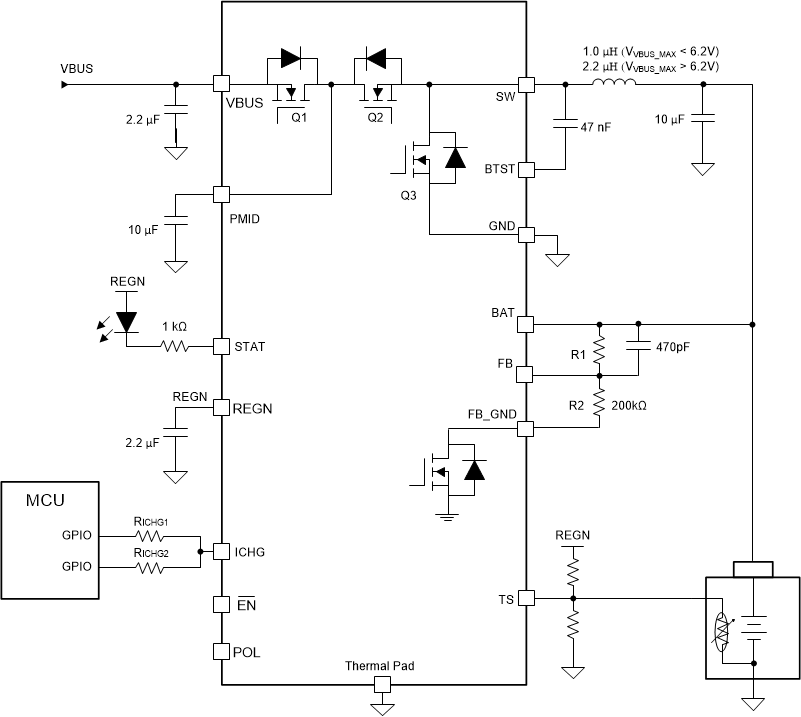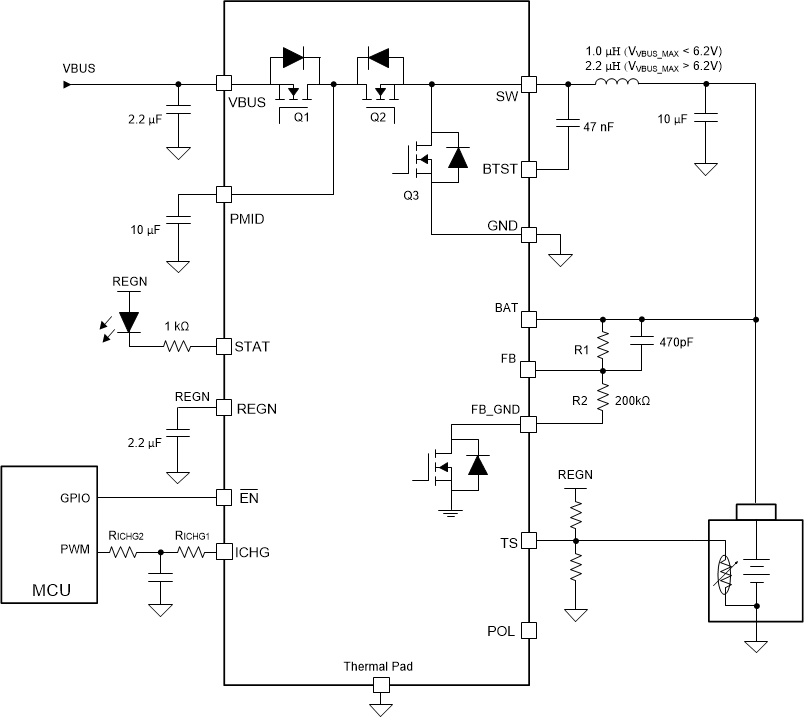ZHCSMH4A march 2020 – november 2020 BQ25306
PRODUCTION DATA
- 1
- 1 特性
- 2 应用
- 3 说明
- 4 Revision History
- 5 说明(续)
- 6 Device Comparison Table
- 7 Pin Configuration and Functions
- 8 Specifications
-
9 Detailed Description
- 9.1 Overview
- 9.2 Functional Block Diagram
- 9.3 Feature Description
- 9.4 Device Functional Modes
- 10Application and Implementation
- 11Power Supply Recommendations
- 12Layout
- 13Device and Documentation Support
- 14Mechanical, Packaging, and Orderable Information
10.2.3 Typical Application with MCU Programmable Charge Current
In some application cases, the charge current needs to be controlled by a MCU. In those cases, the GPIOs of the MCU can be used for on/off control of the charge current setting resistors RICHG1 and RICHG2 as shown in Figure 10-9. With GPIO1 and GPIO2 on/off control, three levels of charge current can be programmed. If the charge current needs to be controlled smoothly in a wide range, a PWM output of the MCU can be used to generate an average DC voltage output to program the charge current as show in Figure 10-10. The charge current can be calculated as: (1V - VPWM) / (RICHG1 + RICHG2). VPWM is the averaged DC voltage of the PWM output and it must be lower than 1 V. The regulated voltage at the ICHG pin is 1 V.
 Figure 10-9 Typical Application with MCU
Programmed Charge Current
Figure 10-9 Typical Application with MCU
Programmed Charge Current (1-µH inductor is recommended if maximum input voltage VVBUS_MAX < 6.2V; 2.2-µH inductor is recommended if maximum input voltage VVBUS_MAX > 6.2V )
 Figure 10-10 Typical Application with MCU
Programmed Charge Current
Figure 10-10 Typical Application with MCU
Programmed Charge Current (1-µH inductor is recommended if maximum input voltage VVBUS_MAX < 6.2V; 2.2-µH inductor is recommended if maximum input voltage VVBUS_MAX > 6.2V )